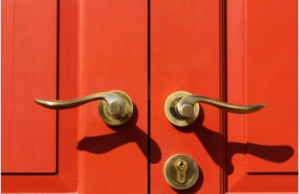Brass handles are among the earliest and most famous of kitchen hardware. They were initially used in refrigerators as door handles to attach kitchen wares and give an attractive appearance to a kitchen. Over time, they were adapted for use on other types of household items. Today, brass handles for home items are used for everything from food to wine bottles and can even be found in industrial applications.
 Brass Handles in Australia have been around since the mid-to-late 19th century and are still popular, although they’re beginning to seem old-fashioned and dusty. Many people still are using brass handles for doors, but over time they’ve become antique, and by the time modern technology has come around, brass is no longer shiny and appealing when combined with white or brass coloured surfaces. Brass now tends to look dirty and old, and although it can be cleaned, other metals do a better job cleaning up an oil stain.
Brass Handles in Australia have been around since the mid-to-late 19th century and are still popular, although they’re beginning to seem old-fashioned and dusty. Many people still are using brass handles for doors, but over time they’ve become antique, and by the time modern technology has come around, brass is no longer shiny and appealing when combined with white or brass coloured surfaces. Brass now tends to look dirty and old, and although it can be cleaned, other metals do a better job cleaning up an oil stain.
It’s easy to clean your brass handles. By following these simply amazing steps, you will have the assurance that you don’t ruin your cupboard, clothes, or hands. First, spray the brass handles with a lacquer coat, a very light coating of which will give a protective coating against tarnish. Allow it to dry thoroughly, then wipe it down with a soft cloth. Don’t ever try to clean with a brass handle with soap or water because this can permanently dull the metal.
Cleaning lacquered brass handles with soap is another bad idea because soap is an acid and will etch the metal. If you must wash your brass handles with soap, make sure you use a gentle dish detergent or mild kitchen soap and only use enough to wet the surface. Washing it too vigorously could cause the brass to become damaged.
Another step in maintaining your brass doors and drawer handles is to apply a thin coat of oil onto them once they’ve had sufficient time to dry. A thin layer of oil is better than grease, which will allow for more excellent lubricity. You can use a very light coat, or even just a couple of drops of oil, as long as you use a very soft cloth while cleaning it. You don’t want to scrape the door handles while applying the oil because this can damage them.
If you feel that the dirt in your handles has gotten a bit out of hand, you can use a little oil brush to polish them off. It’s essential not to use a very hard bristled brush, as this can scratch the surface of your soapy water. To clean the metal, apply a small amount of water-based lanolin or automotive paste wax to a soft cloth and patiently wipe it over the surface. Allow it to dry thoroughly before using a soft dry cloth to buff the surface gently.
In case your Brass Handles in Australia have developed a patina, you may need to protect them from tarnish development by placing them in a protective environment. The easiest solution to protecting them is by placing them in a glass display case. Just be sure to open it up wide enough so that any water vapour that might be present won’t escape and tarnish your precious handles. Placing them in a salt-filled dish will also help protect your metal from developing any patina. You can also place some folded newspapers under your brass doorknobs to keep any debris off of them.
As with other metals, you should avoid cleaning brass as much as possible. If you must clean the metal, you should do so on a very low wattage lamp instead of an electric bulb. It is because the brass tends to develop mildew if you use a robust solution or cleaning agent. Strong acids are the worst type of corrosion you can expect to find when cleaning brass, so be sure to use a solution or chemical that’s safe for brass. If you accidentally ingest some of these corrosive chemicals, you could wind up with serious health problems.